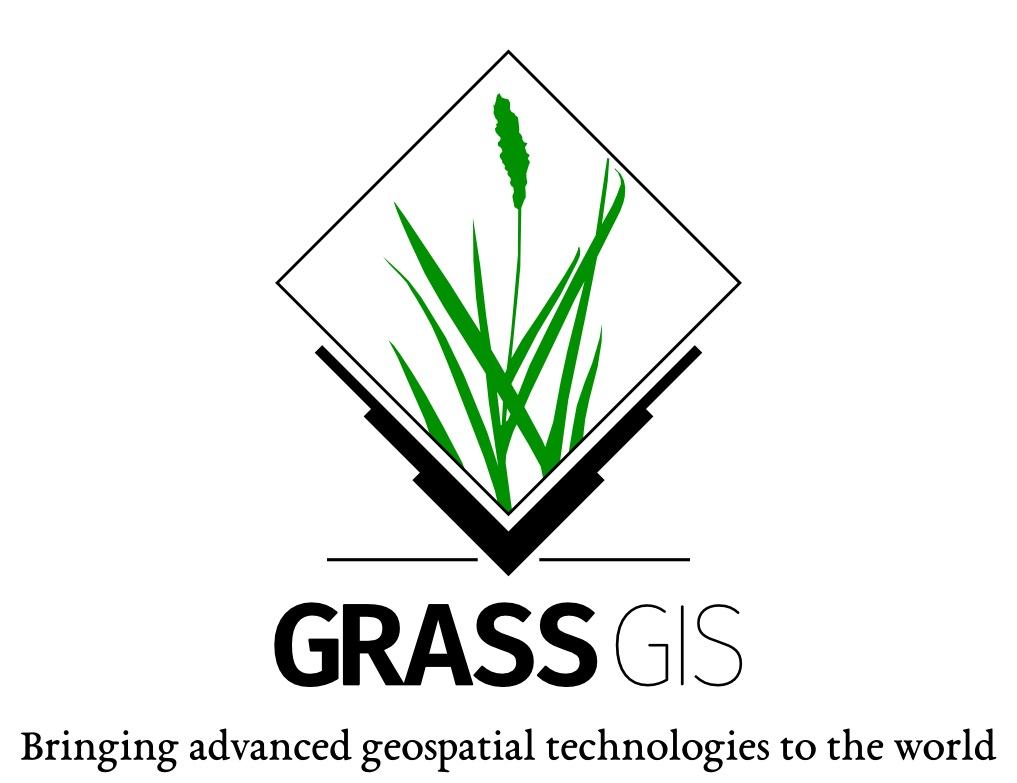Introduction¶
Free and Open Source Software (FOSS)¶

Fig. 1 FOSS software overview (source).
Free and open-source software (FOSS) is a computer software that can be classified as both free software and open-source software. That is, anyone is freely licensed to
- use,
- copy,
- study, and
- change
the software in any way. The source code is openly shared so that people are encouraged to voluntarily improve the design of the software. This is in contrast to proprietary software, where the software is under restrictive copyright and the source code is usually hidden from the users. See Free and open-source software article on Wikipedia for more information.
FOSS for Geospatial¶
In 2006 was founded OSGeo Foundation to support the collaborative development of open source geospatial software, and promote its widespread use.

Fig. 2 OSGeo logo (source)
The foundation has adopted principles to ensure that projects under OSGeo umbrella will satisfy basic quality requirements, namely:
- Projects should manage themselves, striving for consensus and encouraging participation from all contributors - from beginning users to advanced developers.
- Contributors are the scarce resource and successful projects court and encourage them.
- Projects are encouraged to adopt open standards and collaborate with other OSGeo projects.
- Projects are responsible for reviewing and controlling their code bases to insure the integrity of the open source baselines.
This principles ensure that OSGeo projects are well established, stable, mature and sustainable.
Software used in this training materials¶

- GRASS GIS (recommended version 8.0) for geospatial raster, imagery, and vector data processing and providing spatial analysis.
- QGIS desktop (recommended version 3.22) for geospatial visualization, creating hardcopy outputs, and data publishing.
- GDAL library for reading and writing various geospatial data.
- sentinelsat library utility to search and download Copernicus Sentinel satellite images.
- pyModis Python based library to work with MODIS data.
- pyWPS implementation of the Web Processing Service standard from the Open Geospatial Consortium written in Python.
Sample dataset¶
For purpose of this training materials a sample dataset has been created based on Open Data covering Germany and Jena region specifically. Sample dataset is split into four parts:
- jena-sample-data-base.7z (294MB)
- jena-sample-data-lidar.7z (541MB)
- jena-sample-data-sentinel.7z (1.7GB)
- jena-sample-data-modis.7z (1.0GB)
You need at least 10GB free space on your disk (GRASS + sample data + computation).
List of data sources:
- EU-DEM (directory:
eu-dem, source: Copernicus Land Monitoring Service - EU-DEM) - Sample GRASS locations/mapsets (directory:
grassdata) - Lidar LAZ data (directory:
lidar, source: GeoPortal Th) - MODIS Land Surface Temperature eight day 1 Km (directory:
modis, source: LP DAAC) - Administrative regions (directory:
osm, source: OpenStreetMap) - Sentinel-2 data (directory:
sentinel, source: Copernicus Open Access Hub)
Units¶
- Unit 01 - About GRASS GIS
- Unit 02 - First steps
- Unit 03 - Data Management
- Unit 04 - Modules, Region
- Unit 05 - Raster processing
- Unit 06 - Data export
- Unit 07 - QGIS loves GRASS
- Unit 08 - Modeler
- Unit 09 - Model tuning
- Unit 10 - Python intro
- Unit 11 - PyGRASS scripting
- Unit 12 - Script User Interface
- Unit 13 - PyGRASS Raster Access
- Unit 14 - PyGRASS Vector Access
- Unit 15 - Data reprojection
- Unit 16 - Flooding simulation
- Unit 17 - Spatio-temporal intro
- Unit 18 - Lidar, DTM interpolation
- Unit 19 - DTM script parallelization
- Unit 20 - Sentinel downloader
- Unit 21 - Sentinel spatio-temporal
- Unit 22 - Spatio-temporal scripting
- Unit 23 - Spatio-temporal parallelization
- Unit 24 - MODIS
- Unit 25 - MODIS ST
- Unit 26 - MODIS ST scripting
- Unit 27 - PyWPS intro
- Unit 28 - PyWPS LST point stats
- Unit 29 - PyWPS LST region stats
- Unit 30 - PyWPS LST region zones
Lecturer¶
- Martin Landa, GeoForAll Lab, Czech Technical University in Prague, Czech Republic
Materials proudly provided by GISMentors training and mentoring group.
License¶
Creative Commons Attribution-ShareAlike 4.0 International License.
Source code available on GitHub. Feel free to open issues or pull requests to improve the materials :-)
Document version: 3.0 (built Feb 16, 2024)
